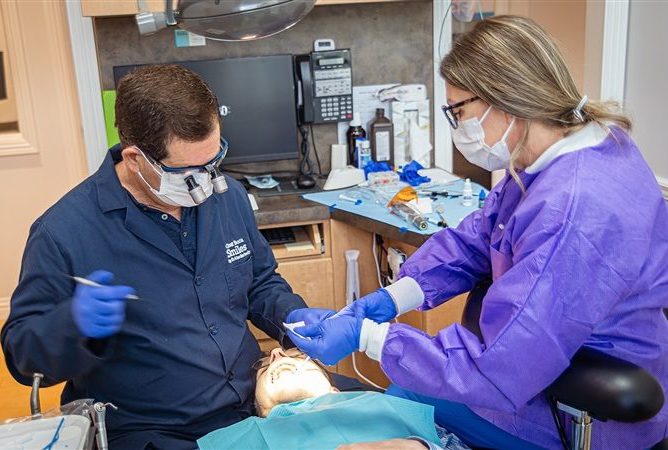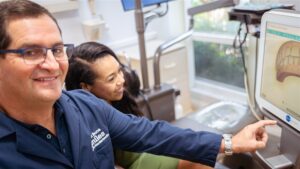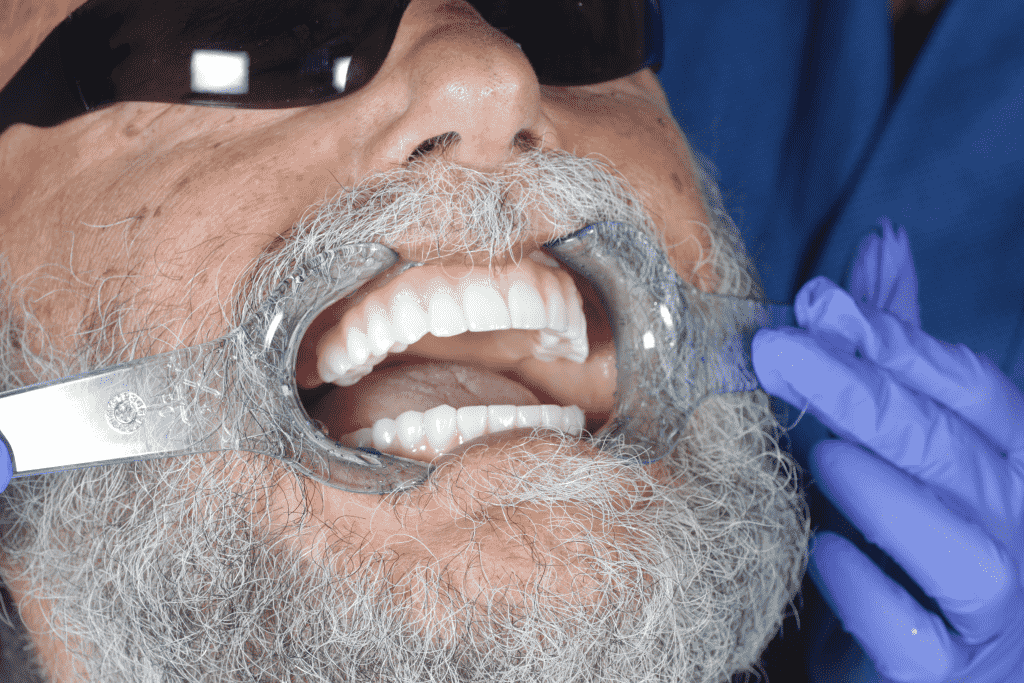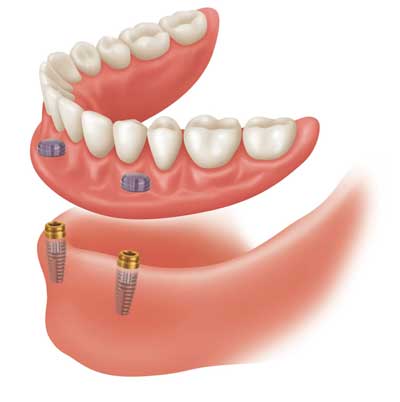When it comes to the topic of dental health, most of us are familiar with the fundamentals of brushing, flossing, and regular check-ups. But what happens when tooth loss occurs due to gum disease, tooth decay, or injury, and we find ourselves navigating the world of temporary dentures? It can feel like a daunting journey, but fear not – we’ve got you covered!
This comprehensive guide will take you through everything you need to know about temporary dentures. From understanding their role in dental health and the different types available to navigating the tooth extraction and denture fitting process. We’ll also delve into the transition to permanent dentures, essential care tips, cost considerations, advantages and challenges, and when to consider alternative solutions. So, let’s dive in and demystify the world of temporary dentures!
Key Takeaways
- Temporary dentures, also known as immediate dentures, serve as a cost-effective and functional interim solution for individuals undergoing tooth extraction, providing protection for gums and preserving oral functions during the healing period.
- The process of getting temporary dentures typically spans four to six dental appointments, involving impressions, fittings, and potentially multiple adjustments to ensure comfort and function, while transitioning to permanent dentures requires patience, adjustments, and proper care.
- Maintenance of temporary dentures is crucial for oral health and includes daily cleaning, proper handling, soaking overnight, and avoiding extreme temperatures, while costs vary significantly based on the type of denture and associated dental procedures.
Understanding Temporary Dentures

Temporary dentures, often known as immediate dentures or immediate denture, are custom-made replacements for missing teeth. They’re specifically designed for individuals who require tooth extraction before receiving their permanent dentures. Unlike their permanent counterparts, these dentures are crafted based on impressions of the patient’s mouth to ensure a proper fit, offering a cost-effective, interim solution during the healing phase following tooth extraction.
The importance of temporary dentures lies in their numerous advantages. They:
- Protect sensitive gum tissue
- Preserve gum shape
- Prevent exposure to irritants such as food and bacteria
- Restore the ability to eat and speak normally during the healing process
Essentially, getting temporary dentures serves as a solution for stand-in replacement teeth during this transition period, preventing further tooth decay by filling the gaps left by extracted teeth.
The Role of Temporary Dentures in Dental Health
Following tooth extraction, temporary dentures are indispensable for maintaining dental health. They fill the gaps left by extracted teeth, safeguarding the gums during the healing phase, and reducing bleeding. Immediate dentures, a type of temporary dentures, can be placed right after tooth extraction, providing these benefits instantly.
Moreover, these dentures have several benefits:
- They significantly aid the transition to permanent dentures
- They facilitate mouth healing and preserve normal appearance and function
- They prepare for the subsequent fitting of permanent dentures
The process involves a key step – the tooth extraction appointment. And while temporary dentures often necessitate refitting over the subsequent weeks and months due to the mouth and gums being in a healing phase, they are generally easier to fit than permanent dentures.
Types of Temporary Dentures
Temporary dentures are available in two main types: complete and partial. These types cater to different needs and preferences of patients. The type you’ll need depends on the number of teeth that require replacement.
Complete temporary dentures are designed to replace all of the teeth in either the upper or lower jaw, whereas partial temporary dentures are intended to replace only a portion of the teeth. Both types of temporary dentures are used after tooth extractions. The fit of a complete temporary denture is determined through a standardized process and it is important to note that it is not custom-fitted like permanent dentures, which may result in a less than optimal fit at times.
Navigating the Tooth Extraction and Denture Fitting Process

The journey towards a complete set of temporary dentures is a process that typically requires two to four dental appointments. This process applies to both complete and temporary partial dentures.
From the initial consultation and impressions to tooth extraction and denture fitting, each step is vital to ensure the best possible outcome. We will now detail the different stages of this process for a better understanding.
Preparing for Your Denture Making Process

Before the denture-making process, your dentist will take impressions of your teeth. Temporary dentures do not necessitate precise bite impressions or extensive customization. They are simpler to fit than permanent dentures, resulting in a less time-consuming and intricate process.
During this appointment, your dentist will also discuss the most suitable options for your specific needs. Available options for temporary dentures include immediate dentures, also known as healing dentures, flipper teeth, and using dental adhesive as a temporary solution for loose dentures. The most suitable option is determined by assessing the patient’s oral health during a scheduled appointment. This assessment takes into account factors such as the extent of tooth loss, the health of the gums, and the patient’s overall dental health requirements.
What Happens During the Tooth Removal Appointment
During the tooth removal appointment, the dentist will use various tools such as:
- Cotton rolls
- Topical numbing agent
- Gauze
- Anesthesia needle
- Anesthetic
- Syringe
- Mirror
- Explorer
- Extraction forceps
- Straight elevator
- Luxating elevator
To extract the necessary teeth, dentists often deal with lost teeth. Following the extraction, temporary dentures are placed in the mouth, providing patients with natural teeth during the healing period.
After the tooth extraction, patients can anticipate a healing period during which the recovery time and the complete healing of the underlying bone may take up to 8 months. Subsequent appointments may be required for adjustments and to verify proper fit and comfort.
Achieving a comfortable and secure fit with your new dentures involves this entire process.
The Transition: From Temporary to Permanent Dentures

Transitioning from temporary to permanent dentures is a process that requires patience and care. During this time, your mouth undergoes changes that may affect the fit and comfort of your temporary dentures.
This transition involves a healing period, during which time bite impressions are taken and multiple adjustments are made to ensure a comfortable and secure fit. Following tooth extraction, temporary dentures are typically kept in position for 24-48 hours before their initial removal to facilitate necessary adjustments.
Once adjusted to the permanent dentures, they can be removed at night, and any necessary repairs or realignment would likely involve sending them to a laboratory and keeping them overnight.
Care Tips for Your New Dentures

After receiving your temporary dentures, their longevity and your overall oral health largely depend on proper care and maintenance. From daily cleaning to handling and protecting your dentures, every step counts in ensuring your dentures serve you well.
Daily cleaning of your dentures is a significant part of maintaining good oral health. This involves removing them and rinsing them, brushing them once per day, and soaking them overnight. Proper care and maintenance play a crucial role in preserving oral health and ensuring the durability of temporary dentures.
Daily Maintenance of Temporary Dentures
Cleaning your temporary dentures is a simple but essential routine. Here are the steps to follow:
- Use a denture brush or a toothbrush specifically designed for dentures when cleaning your dentures.
- Remove your dentures and rinse them thoroughly.
- Brush your dentures once per day, using a gentle circular motion.
- Soak your dentures overnight in a denture cleaning solution.
By following these steps on a daily basis, you can keep your temporary dentures clean and in good condition.
But what should you use to clean your dentures? The most effective cleaning solutions for temporary dentures include homemade products such as baking soda and vinegar, dentist-recommended non-abrasive cleaning agents, and non-abrasive toothpaste. Soaking temporary dentures overnight is significant as it aids in the removal of bacteria, prevention of odor, and preservation of optimal oral health.
Handling and Protecting Your Dentures
Handling your dentures with care is just as important as cleaning them. When removing dentures, it’s recommended to hold the middle part between your thumb and middle finger and gently loosen. After cleaning, it’s important to thoroughly rinse the dentures to remove any residue.
Dentures should be kept moist when not in use to maintain their shape. This prevents them from becoming brittle. This can be achieved by soaking them in plain tap water, distilled water, or a cleansing solution. But remember, dentures are susceptible to damage from hot or cold temperatures. It’s advisable to refrain from immersing dentures in hot water, as it can result in warping. Instead, use cool or lukewarm water to preserve their effectiveness without causing harm.
Cost Considerations for Temporary Dentures

Understanding the associated costs is a key aspect when considering temporary dentures. The typical cost of temporary dentures in the United States is approximately $3900 for a set of immediate dentures, with prices varying from $450 to $2,000 as reported by GoodRx.
The total cost of temporary dentures is influenced by various factors, including:
- Whether they are partial or complete
- The necessity of extractions
- The preparation time for immediate dentures
- Any adjustments needed during usage
So, while temporary dentures may seem like a significant investment, when considering their benefits and the improved quality of life they offer, many find them to be a worthwhile expenditure.
Advantages and Challenges of Temporary Dentures
Like any dental procedure, temporary dentures come with their own set of advantages and potential challenges. On the positive side, temporary dentures offer numerous benefits including cost-effectiveness, immediate protection for gums after tooth extraction, and support in maintaining the structure of the mouth and face.
However, potential challenges related to temporary dentures may include:
- Difficulties in speaking
- Soreness and irritation in the gums
- Discomfort and fit issues causing irritation
- Overall discomfort while chewing and speaking
Considering these factors and discussing any concerns with your dental professional is vital in making the best decision for your specific needs, including addressing gum disease.
Benefits of Opting for Temporary Dentures
Opting for temporary dentures brings a multitude of benefits. For starters, they’re often more affordable than their permanent counterparts, making them a cost-effective solution for many patients.
Additionally, temporary dentures offer the following benefits:
- Safeguarding the extraction site
- Alleviating irritation
- Diminishing bleeding and swelling
- Offering support to the surrounding tissues
- Providing a range of flexible options, allowing for partial or complete dentures based on the number of teeth requiring replacement.
These conventional dentures can adapt to the healing process and are easily adjustable during the transition to a permanent denture solution.
Potential Drawbacks to Be Aware Of
Even though temporary dentures offer numerous benefits, being aware of potential drawbacks is equally important. Limited functionality with temporary dentures indicates that they are not as precisely tailored as permanent dentures, potentially causing an ill fit and decreased stability, resulting in reduced overall functionality.
Another potential drawback is jaw bone shrinkage. Wearing temporary dentures can expedite the natural process of bone resorption, ultimately resulting in jaw bone shrinkage as time progresses. Additionally, the sensitivity and discomfort commonly associated with temporary dentures can be attributed to the friction against the gums and other delicate oral tissues, resulting in soreness.
When to Consider Alternative Solutions

Although temporary dentures serve as a viable solution for many, some situations might necessitate alternative solutions. If you don’t require a full set of dentures or prefer a different approach to replacing missing teeth, alternatives such as dental bridges, removable partial dentures and dental implants might be a better fit.
Dental bridges are permanent restorations comprising porcelain teeth affixed to crowns on abutment teeth, whereas full dentures are removable prosthetic teeth that can be attached to the gums and taken out as necessary. When deciding between full dentures and alternative solutions, factors such as the extent of tooth loss, aesthetics, comfort, maintenance requirements, cost, bone health, and the time you are willing to invest should be taken into account.
Summary
To sum up, temporary dentures serve as a lifesaver for many individuals who have undergone tooth extraction, providing an immediate solution while they wait for their permanent dentures. They not only help maintain oral health by filling gaps and protecting gum tissue but also play a significant role in preserving the structure of the face and improving overall aesthetics.
However, like any dental procedure, temporary dentures come with their own set of advantages and potential challenges. From cost considerations to daily care, and from the transition to permanent dentures to when to consider alternatives, it’s important to have all the facts to make an informed decision. But with the right guidance and care, temporary dentures can significantly improve the quality of life for those needing them.
Frequently Asked Questions
How long can temporary dentures last?
Temporary dentures, also known as immediate dentures, are designed to be temporary and typically last for about 6 to 24 months until a permanent denture can be made. They are not custom-fitted, so many people opt to wear them for a shorter period due to possible slipping and moving.
Can you buy temporary denture?
It’s not recommended to buy temporary denture kits from drug stores or online without consulting a dental professional, as they may not provide long-lasting results and could end up costing more in the long run.
Can you eat with a temporary denture?
Yes, you can eat with a temporary denture, but it’s advisable to stick to soft foods and dishes that don’t require a lot of chewing at first.
Do you get temporary dentures while waiting for dentures?
Yes, you can get temporary immediate dentures while waiting for your permanent ones to accommodate the healing of your gums.
How are temporary dentures fitted?
Temporary dentures are fitted by immediately placing false teeth after tooth removal, making the process simpler and less time-consuming than fitting permanent dentures.

